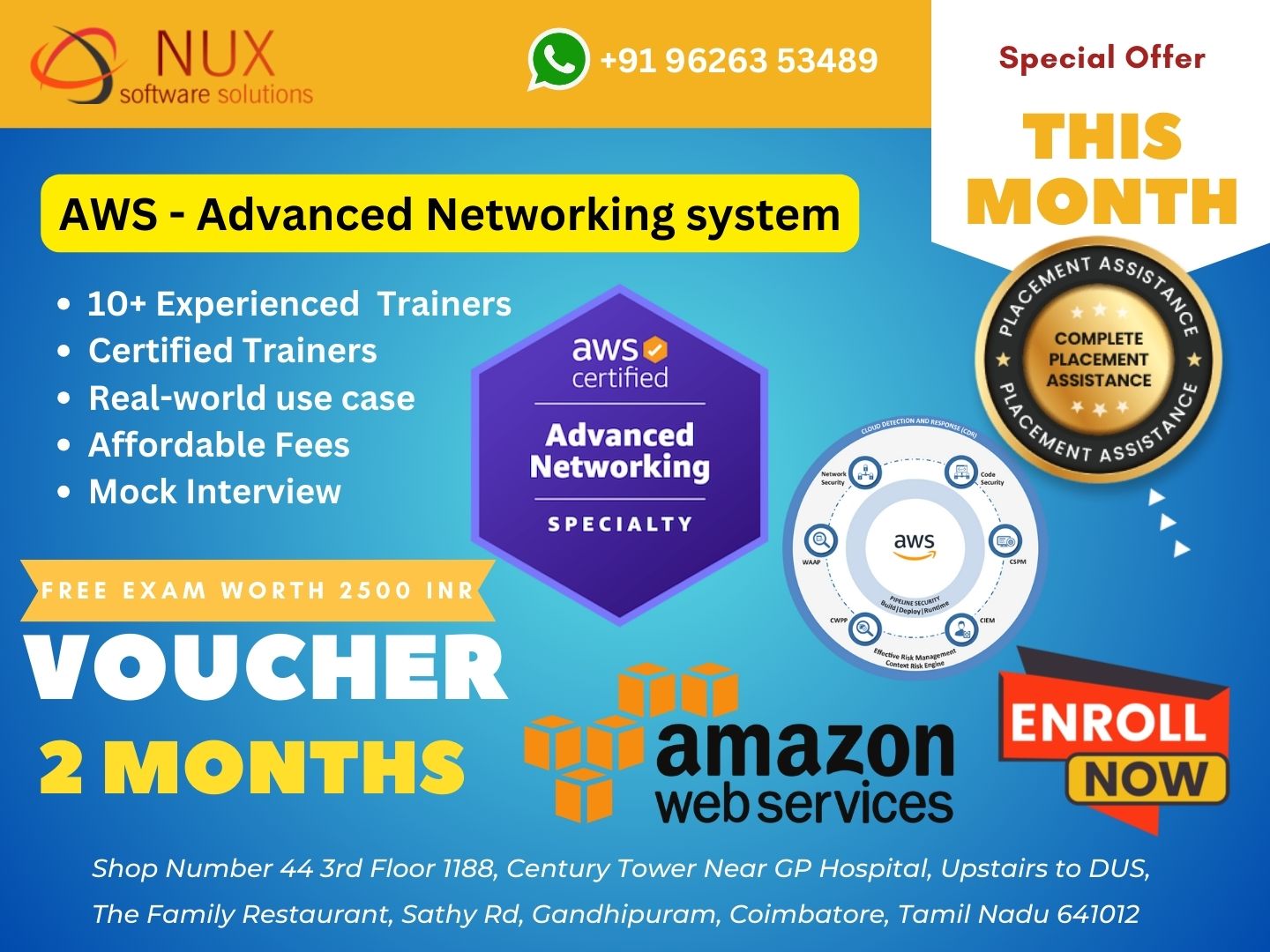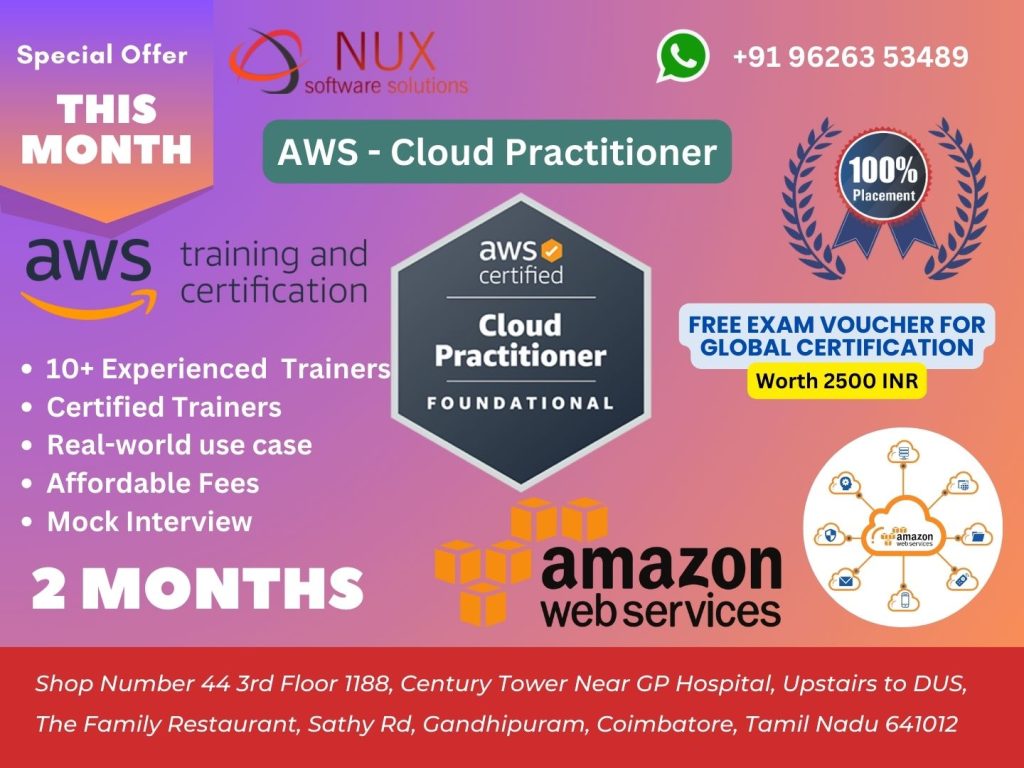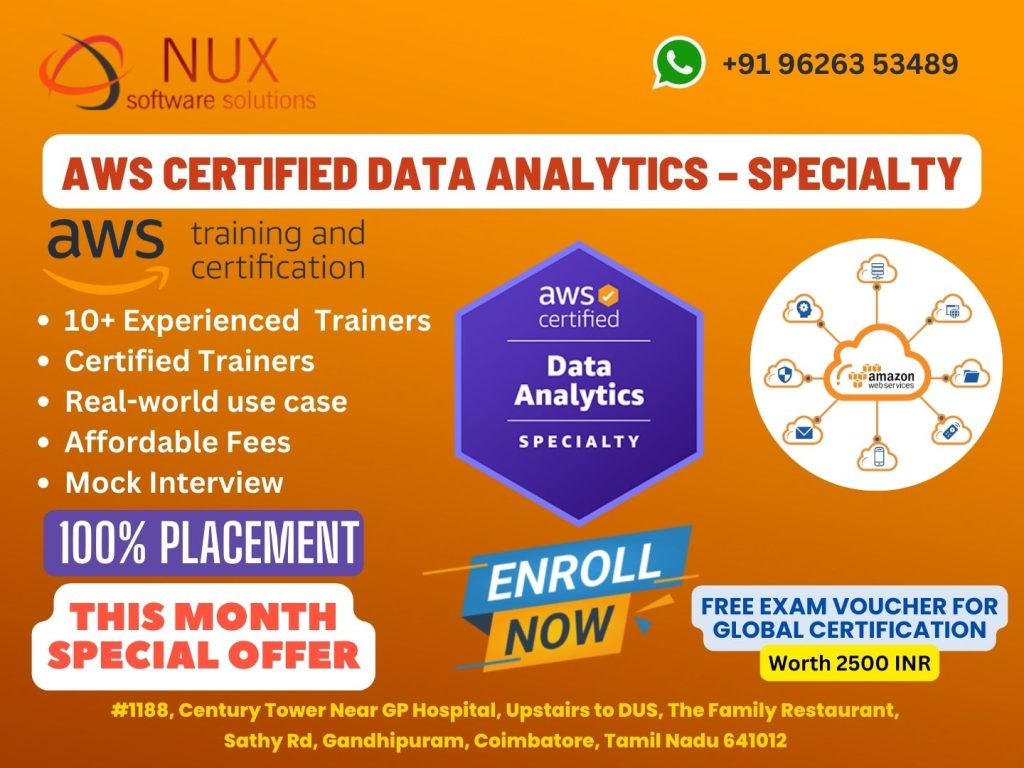AWS certified security specialty-SCS-C02 Training Course

Best AWS certified security specialty-SCS-C02 Training Course
The AWS Certified Security – Specialty (SCS-C02) is an advanced-level certification designed for professionals who want to demonstrate their expertise in securing data, workloads, and applications in the AWS cloud. This course is ideal for individuals with hands-on experience in security roles and aims to deepen their knowledge of AWS’s security services, compliance frameworks, threat detection, data protection, and incident response strategies.
At our Linux Training Center in Coimbatore, we offer expert-led training that combines theoretical concepts with practical implementation. Students will work on real-time projects and hands-on labs that simulate real-world security scenarios.
From configuring Identity and Access Management (IAM) policies to setting up secure networks with VPC and analyzing security events with AWS CloudTrail and GuardDuty, this course ensures you’re prepared both for the SCS-C02 certification exam and for actual security operations in cloud environments.
Who Should Enroll?
This course is best suited for security professionals, cloud engineers, system administrators, DevSecOps practitioners, and anyone looking to specialize in cloud security on AWS. It is also ideal for those who already hold associate-level AWS certifications and want to move into a security-focused career path.
What You Will Learn
You’ll gain hands-on knowledge in securing AWS workloads, managing identity and access, configuring encryption, monitoring and logging cloud activity, handling incident response, implementing compliance and governance controls, and designing architectures that meet industry-grade security requirements. You’ll also learn to secure applications and data across hybrid environments using AWS-native security tools.
Prerequisites
Prior experience with AWS services and general security principles is recommended. It is beneficial to have completed the AWS Solutions Architect – Associate or AWS SysOps Administrator – Associate certifications, although it’s not mandatory. Basic knowledge of networking, firewalls, and IAM will help you get the most out of the course.
Course Benefits
SCS-C02 exam-focused curriculum designed by certified experts, practical labs and real-world AWS security use cases, access to premium study materials and mock exams, guidance on building a career in AWS cloud security, post-training support including resume reviews and job referrals.
Career Opportunities After Certification
This certification opens opportunities for roles like AWS Security Engineer, Cloud Security Architect, DevSecOps Specialist, Cybersecurity Analyst – AWS, and Compliance & Risk Manager – Cloud Infrastructure.
Advance your cloud security career with our AWS Certified Security – Specialty (SCS-C02) training at Linux Training Center, Coimbatore. Our expert mentors, real-time labs, and personalized guidance will help you gain the confidence to crack the exam and secure top security roles in cloud infrastructure.
Enroll now to become a trusted AWS security expert – contact us today to join the next batch.
AWS Certified Security Specialty (SCS-C02) Syllabus
Chapter 1
Introduction, The Exam Blueprint
Chapter 2
Security 101, Security Basics, Security of AWS, Shared Responsibility Model, Security in AWS, Chapter 2 Summary
Given an AWS abuse notice, evaluate the suspected compromised instance or exposed access keys.
Chapter 3
p>Identity Access Management, S3 & Security Policies, IAM Recap, IAM Root Users, IAM Policies 101, S3 Bucket Policies, S3 ACL’s, Conflicting Policies – The Key To Passing Your Exam, Forcing Encryption Using S3, Cross Region Replication And S3, Forcing S3 to Use CloudFront, Custom SSL Certificates With CloudFront, S3 Pre-signed URLs, Security Token Services With Active Directory, Web Identity Federation, Cognito, Cognito Lab, Glacier Vault Lock, AWS Organizations & Service Control Policies, IAM Credential Report, Chapter 3 Summary
Verify that the Incident Response plan includes relevant AWS services.
Chapter 4
Logging And Monitoring, CloudTrail – Turning It On, CloudTrail – Protecting Your Logs, CloudWatch 101, AWS Config 101, AWS Config Lab, Set Up An Alert If The Root User Logs In, Cloud HSM, Inspector & Trusted Advisor, Logging With AWS – White Paper, Chapter 4 Summary
Design and implement security monitoring and alerting.
Chapter 5
Infrastructure Security, KMS Part 1, KMS Part 2, KMS Part 3, KMS Part 4, KMS Key Rotation Options, Using Your Own Key Pairs – Mac Users Only, Using Your Own Key Pairs – Windows Users Only, Using KMS With EBS, EC2 & Key Pairs, EC2 & Key Pairs – Part 2, AWS Market Place Security Products, AWS WAF & AWS Shield, Dedicated Instances vs Dedicated Hosts, AWS Hypervisors, KMS Grants, KMS ViaService, Cross Account Access To KMS CMKs, Introduction To Microservices, Introduction To Containers, Containers Lab, Container Security, Chapter 5 Summary
Troubleshoot logging solutions.
Chapter 6
Data Protection With VPCs, VPC Introduction, Setting Up Our VPC Part 1, Setting Up Our VPC Part 2, Nat Instances & Nat Gateways, NACLs vs Security Groups, Application Load Balancers & custom VPC’s, Elastic Load Balancers and TLS/SSL Termination, VPC Flow Logs, NAT’s vs Bastions, Session Manager, Session Manager Lab, VPC End Points, CloudHSM – Introduction, CloudHSM – Setup & Initializing Our Cluster, CloudHSM – Installing and Configuring Our Client, CloudHSM – User Management & Generating & Exporting Keys, CloudHSM – Clean Up, VPC – Clean Up, Amazon DNS, Transit Gateway, Chapter 6 Summary
Design and implement host-based security.
Chapter 7
Incident Response & AWS In The Real World, DDOS Overview, WAF Integration, EC2 Has Been Hacked! What should you do?, I’ve Leaked My Keys On Github Accidentally, Reading CloudTrail Logs, Pen Testing – AWS Market Place, AWS Certificate Manager, Perfect Forward Secrecy and ALBs, API Gateway – Throttling & Caching, AWS Systems Manager Parameter Store, AWS Systems Manager Run Command, Compliance in AWS
Design and implement a scalable authorization and authentication system to access AWS resources.
Chapter 8
Updates Based On Student Feedback, Introduction To Athena, Athena Lab, Introduction To Macie, Macie Lab, Introduction To GuardDuty, GuardDuty Lab, Secrets Manager, Simple Email Service, Security Hub, Security Hub Lab, Network Packet Inspection, Active Directory Federation With AWS, AWS Artifact, Additional Resources For Exam Preparation
Troubleshoot key management.
Chapter 9
Troubleshooting Scenarios, Troubleshooting Monitoring & Alerting, Lambda Lab, Troubleshooting Logging, Troubleshooting Secure Network Infrastructure, Troubleshooting Authentication & Authorization, Troubleshooting Cross Account Access With STS:AssumeRole, Troubleshooting Lambda Access, Troubleshooting Access To CMKs in KMS



